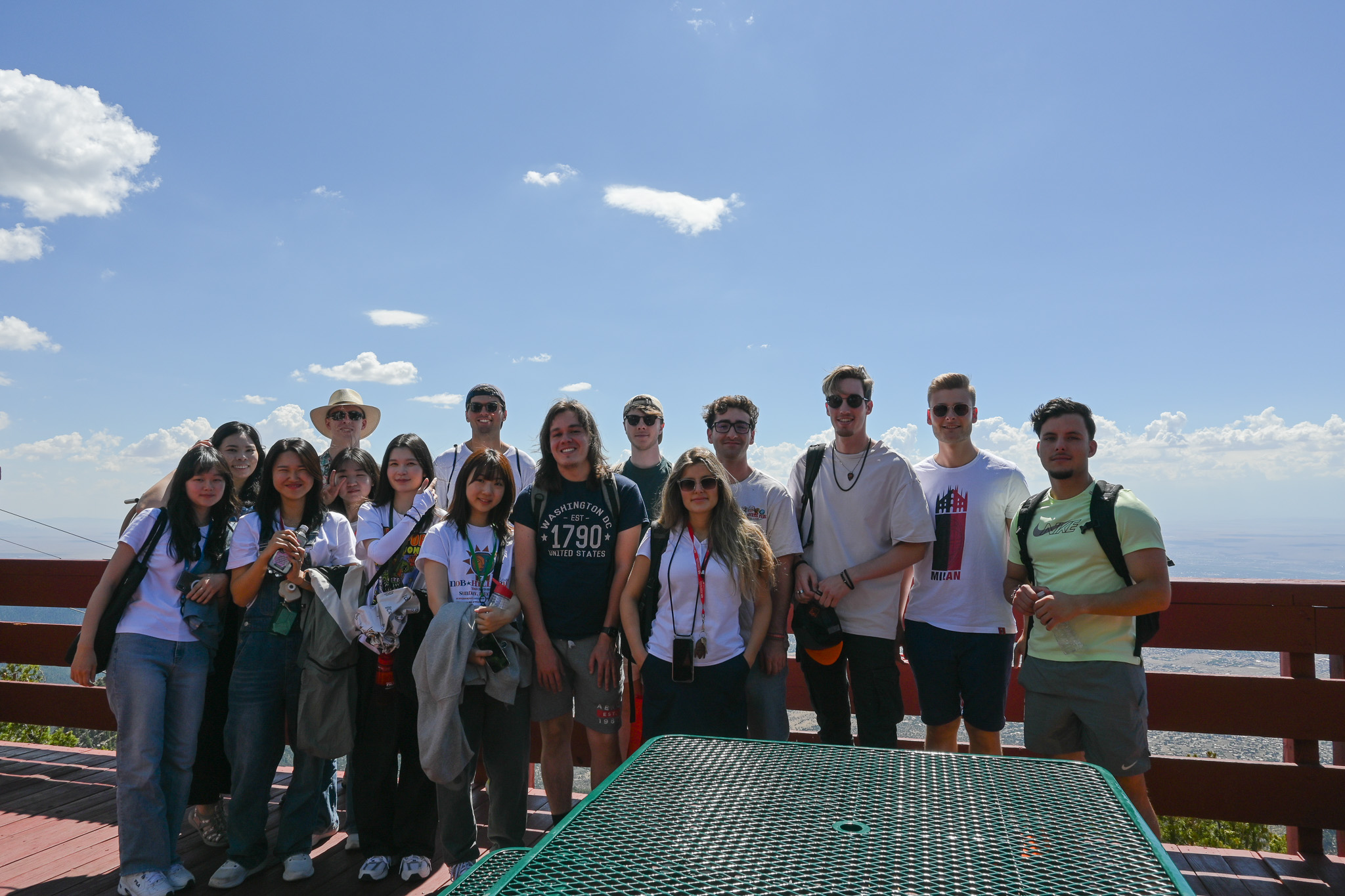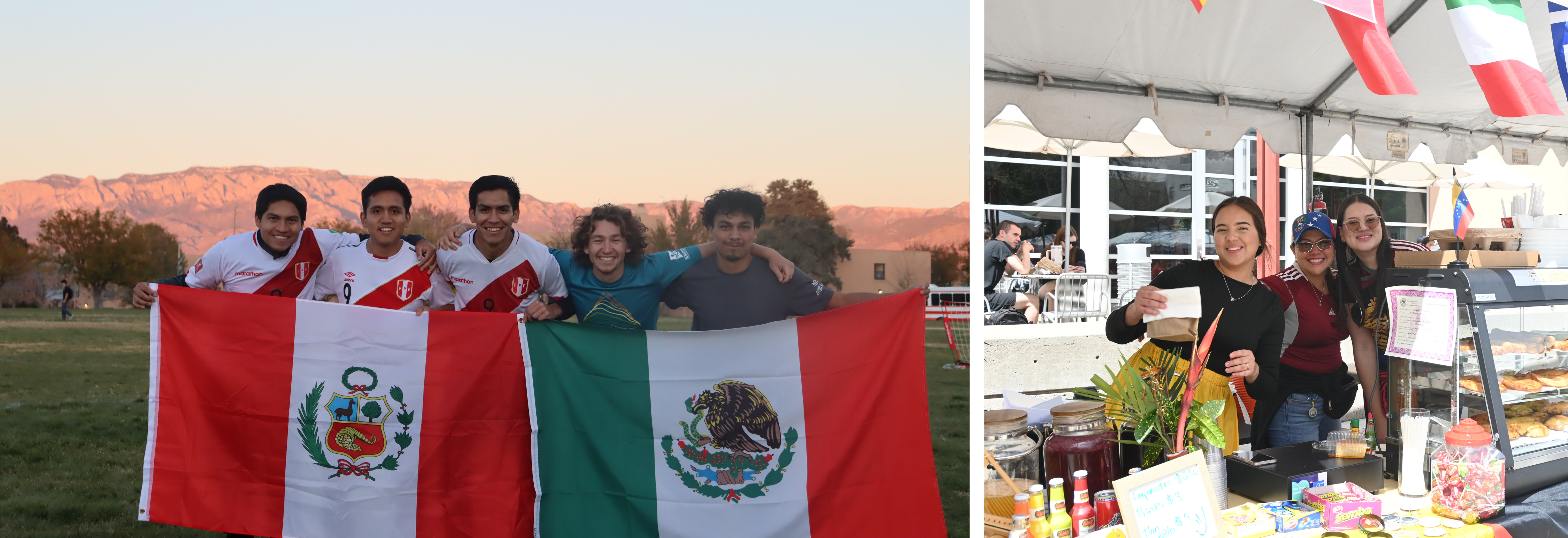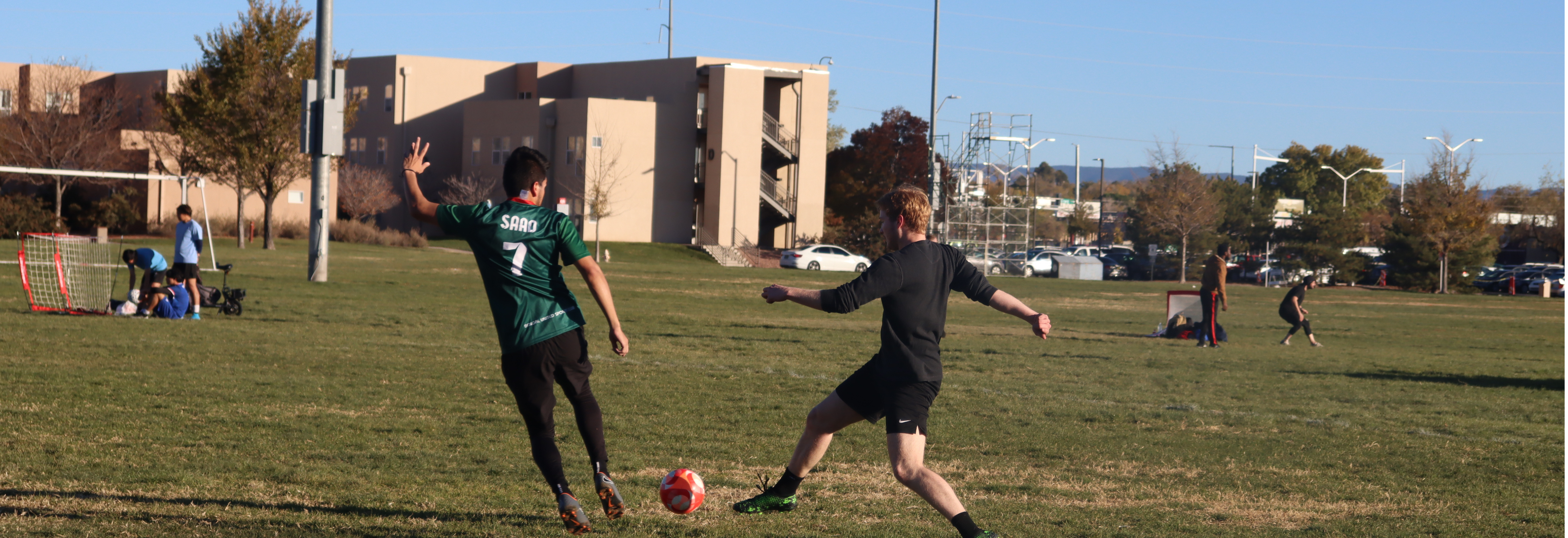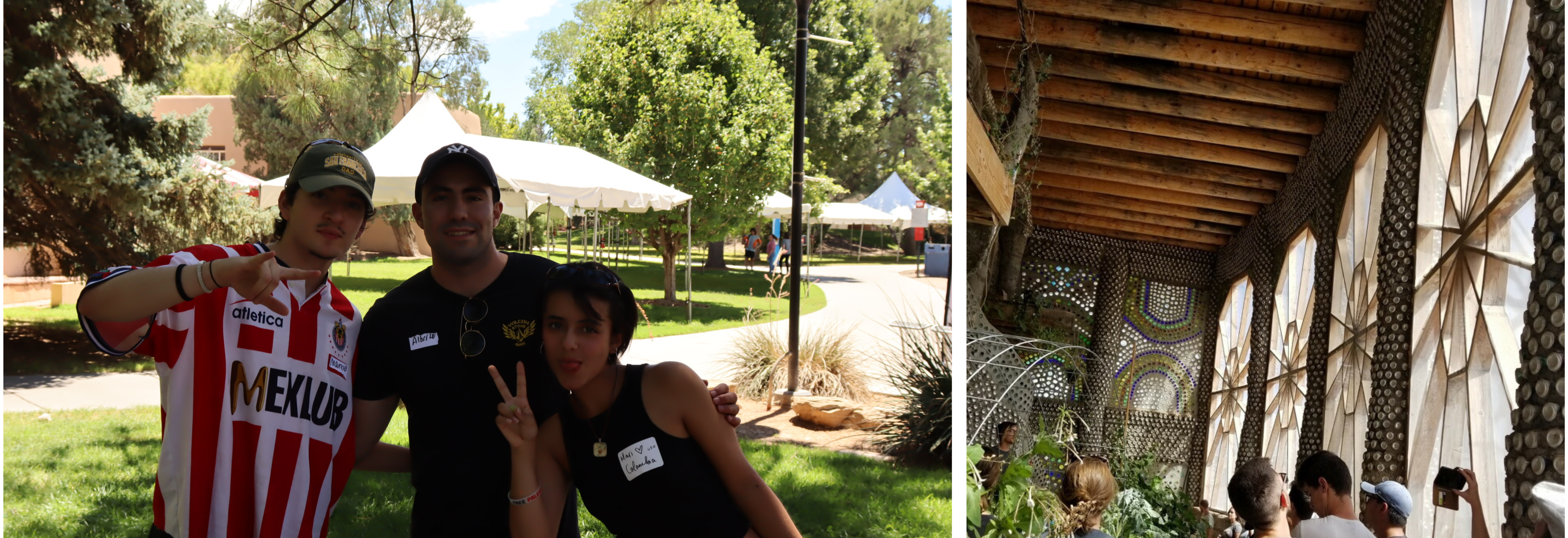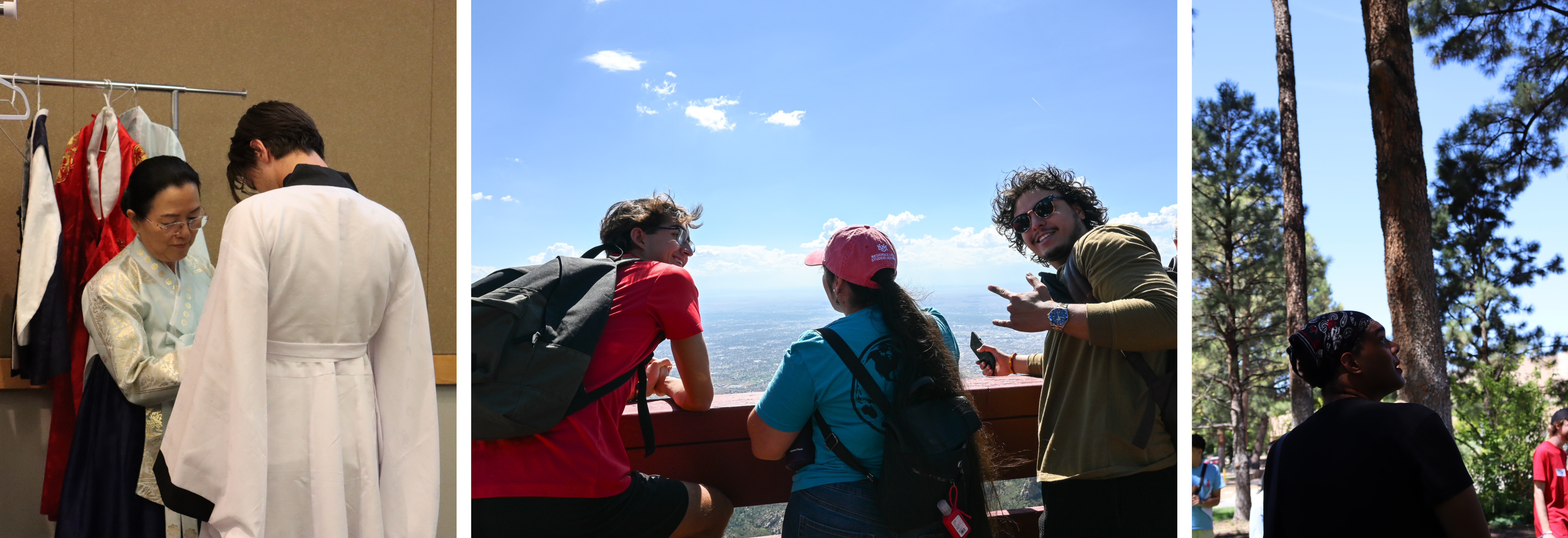Travel Requirements
Travel In The U.S
While traveling in the U.S. (out of Albuquerque), you need to carry the following documents: Passport I-94 I-20/DS-2019 In ABQ, copies should be good enough; I-94 is the actual legal requirement
Travel Outside The U.S
Students on F or J Visas and their dependents MUST present the following documents to reenter after any departure outside the U.S.: SEVIS Form I-20/DS-2019, signed for travel by an international advisor at UNM within the last six months. A valid passport (must be valid for at least 6 months into the future). A valid F or J visa stamp. If you are traveling to Canada or Mexico for less than 30 days and not applying for a visa while there, you may be able to travel with an expired visa (ask an advisor for details). REMEMBER: The GEO advisor's signature confirms that you are maintaining legal status. It is the individual’s responsibility to confirm the visa and passport are valid for re-entry to the U.S. If you have questions consult with an international advisor to be sure you understand the rules before you travel outside the U.S. The documents and signatures above are needed in order to return to the U.S. in student status even if you will only leave the U.S. for a brief period of time. If you plan to travel out of the U.S. for an extended period of time (more than 5 months), you must come in to speak with a GEO advisor about requirements and options. If your visa has expired, you will need to apply for a new visa while outside of the U.S.; you must plan enough time to obtain the visa while you are abroad. For a travel FAQ, Please visit U.S. Immigration Website for Travel If you plan to travel out of the US briefly between attending a previous institution and attending UNM and you do not have a valid student visa, you should present the UNM I-20 or DS-2019 form, along with financial proof and proof of your intent to return home, to a consular officer at a US Embassy or Consulate abroad to obtain a student entry visa (please see above for more information about applying for a visa - Canadian citizens do not require entry visas). You will also need to show the I-20/DS-2019 form to the inspecting immigration officer upon entry to the US. NOTE: Remember, you must bring the paper versions of these documents. It is recommended that you also bring certified copies of your birth certificate and any national identification card. F-1 students who have graduated and are on authorized OPT must present the following documents to re-enter after any departure outside the US: SEVIS Form I-20, signed for travel by an international advisor at UNM within the last six months. Employment Authorization Document (EAD). Note that the EAD card says “not valid for travel” on the face of the card. This means that you cannot use the EAD alone to reenter the US, but must also have the signed I-20 and a letter of employment. Valid passport. Valid F-1 visa stamp (if you are traveling to Canada or Mexico for less than 30 days and not applying for a visa while there, you may be able to travel with an expired visa - ask an advisor for details). Documentation or letter from your OPT employer, showing that you are working for them on OPT. Below is a list of documents F-2 dependents must have to reenter the US if they are traveling without the student. SEVIS Form I-20, endorsed for travel by an international advisor at UNM within the last six months. Copy of the F-1 student (spouse/parent) SEVIS Form I-20 showing authorized OPT. Copy of the F-1 student’s Employment Authorization Document (EAD). Valid passport. Valid F-2 visa stamp (if you are traveling to Canada or Mexico for less than 30 days and not applying for a visa while there, you may be able to travel with an expired visa -ask an advisor for details). Documentation or letter from the F-1 student’s OPT employer, showing that the F-1 student is working on OPT. Remember: The GEO advisor's signature confirms that you are maintaining legal status. If you do not have all of these documents, you should not travel out of the country or you risk not being able to reenter to participate in optional practical training. Traveling outside the US is not recommended if your F-1 visa has expired; a new one is required in order to reenter the US. Be sure to consult with an international advisor when contemplating travel outside the US and reentry to continue OPT.Re-entry
Re-entry for students transferring from another U.S. Institution
Re-entry for those on OPT
Re-entry for F-2 dependents of F-1 students on OPT
Renewing Your Visa
Students who are maintaining legal student status in the US do not need to have a valid visa to REMAIN in the US. However if a student plans to leave the US and return to resume studies, in most cases, they need a valid visa to return (Canadian citizens do NOT need visas to enter the US). New student visas cannot be obtained in the US. If your F-1 or J-1 visa in your passport has already expired and you want to apply for a new visa, please read the following information carefully. You should schedule appointments and make plans well in advance of the date of travel. Please note that getting a visa can be very difficult in some countries. Please speak with an advisor before you go. You must: Be maintaining legal student status (if you have violated your status, speak with an advisor about your situation before you leave the US). Be currently enrolled or planning to enroll for the next academic semester at UNM or have received an authorization to engage in Optional Practical Training (for F-1 students) or Academic Training (for J-1 students). F-1 students on OPT will need an EAD card and job offer. J-1 students will need the Academic Training authorization letter. (Note: applying for a visa while on OPT can be risky; ask an advisor or read the OPT handouts for more information). If you will be enrolling at another US institution when you return to the US, you should use the I-20 or DS-2019 from that school to apply for the visa. Sometimes this is not possible; please see an advisor if this is your situation. Be able to demonstrate to the satisfaction of the visa officer that you have enough funding to complete your program and that you plan to return to your home country. If you have relatives that are US citizens or permanent residents, this will be more difficult to do. Have a "valid" reason for applying in the country where the consulate is located; you are likely to be denied if your only reason for applying in that country is to avoid your home country consulate. Have had a previous visa that was issued in your home country (recommended if you will travel to a third country). Continuing students applying for the SAME type of student status they currently have (F or J) should NOT have to pay the SEVIS fee; however, if you have interrupted your status via absence from the US for more than 5 months or by violating your status you will need to pay the fee before you apply for the visa (instructions are below). A valid visa MAY NOT be required for return to the US after travel of less than 30 days to "a contiguous territory" (contiguous territory includes Canada, Mexico, and islands adjacent to the US - other than Cuba). This exception is called the "automatic revalidation of visa" benefit. The following individuals are NOT eligible to return to the US as a part of automatic revalidation and MUST get a visa to return: Nationals of countries identified as state sponsors of terrorism by the State Department's annual "Patterns of Global Terrorism" report. Any non-immigrant who applies for a new visa while in a contiguous territory (not just someone from the countries listed above). Those who apply for a new visa and are denied must obtain a new F-1 visa before they can reenter the US. It is important to remember that even though a national of a country may be eligible for reentry under the automatic visa revalidation regulations, they may still require security or other clearances before being permitted to reenter the US, which may require them to remain outside the US for more than 30 days. The visa process and amount of time vary according to the individual consulate. Most consulates require that you schedule an in-person appointment weeks in advance; if approved, visas are usually issued on the same day or the day following the appointment. However, you might have to wait longer for the visa if your application is selected for a security check. You should be aware that any encounter with a law enforcement agency may affect the visa application process as well as any future applications. An alcohol-related arrest or conviction in the last five years, or two or more in the last ten years, is very likely to impact the process. You will not be permitted to take any electronic devices including cellular phones, beepers, etc. into the Consulate. Also, weapons (including pocket knives), spray cans, and perfumes are not permitted. All your personal belongings will be searched at the entrance to the Consulate. Furthermore, only the actual visa applicants who have an appointment will be allowed inside the Consulate. Anyone else accompanying you will have to wait for you outside. It may take several hours to complete the visa process. Please remember to be patient and friendly. Lines may be lengthy and you may have to wait for a long time, but it is important to remain calm and respectful. Visit the website of the Consulate you are going to. Links to consular websites can be found on the State Department website at: https://www.usembassy.gov/. Step 1: Make an appointment with the U.S. Consulate Check the website of the Consulate you plan to go to. All consular websites can be accessed via the State Department website at https://www.usembassy.gov/. Appointments must be made in advance (often at least three weeks or more). You will typically receive an appointment letter with the appointment date and confirmation number, which you will need to bring with you when you apply for your visa. There are a few consulates which may allow you to renew a student visa without an appointment. Step 2: Make sure you have a valid, original SEVIS I-20 or DS-2019 for the school you will attend You will have to bring a SEVIS I-20 or DS-2019 when you go to apply for your new visa. If you do not have a SEVIS I-20/DS-2019, please make an appointment with a GEO advisor by calling 277-4032 to discuss your situation. Step 3: Bring the following documents with you for the visa appointment Read the information sent to you by the US Consulate in your appointment letter carefully and follow their instructions regarding documentation for your visa interview. These are some of the documents that are requested by US Consulates: SEVIS I-20/DS-2019 signed for travel by a GEO advisor within the last six months for re-entry. Valid Passport (valid) at least six months into the future. Appointment Letter with your appointment date and confirmation number sent to you by the US consulate. Official Academic Transcript in a sealed envelope. You can obtain official transcripts from the Office of the Registrar for $11. Transcripts are processed within 3 to 5 business days. Please review the processing instructions at the Office of the Registrar. Proof of Sufficient Funds. If you have an assistantship, bring a copy of your current assistantship contract or a letter from the department that awarded you the assistantship stating the amount you receive including the cost of tuition and student health insurance if covered by your contract. If you do not hold an assistantship, bring a current bank statement from either your personal or family's account or your sponsor's bank account. If you are on a scholarship or a student loan from your government, bring the appropriate documentation specifying the amounts you receive. Visa Application Fee. The current visa application fee is $185 which you will have to pay in cash or at a local bank; the Consulate's instruction sheet has this information. Reciprocity Fee. There may be a reciprocity fee for visa applicants from certain countries. For more information regarding specific countries and reciprocity fee amounts, please visit: https://travel.state.gov/content/travel/en/us-visas/Visa-Reciprocity-and-Civil-Documents-by-Country.html/ SEVIS Fee. If you have interrupted your status by a violation or an absence from the US for more than 5 months, or if you will change from an F-1 visa to a J-1 visa or vice versa you will have to pay this fee. All incoming F-1 students must pay a mandatory US $350 SEVIS (Student Exchange Visitor Information System) fee and J-1 students must pay a mandatory US $220 SEVIS fee. This is a US government fee and is in addition to any visa fee. If you do not enter the US within 12 months of payment of the fee, you must pay it again. Continuing students do not have to pay the fee if they are continuing in the same visa status without interruption. If you do have to pay, you must pay this fee at least 3-business days prior to your interview at the Consulate. The payment of the fee will be recorded in the SEVIS system and should be fully processed before you go to the Consulate for the interview. We recommend that you bring proof of payment to your interview. You can pay the SEVIS fee in one of three ways: Through the Internet at www.FMJfee.com by using a credit card and completing the online Form I-901. Once you have submitted the payment, please print the computer-generated receipt. This receipt will be your proof of payment. Currently, SEVP is unable to accept credit card payments on behalf of students or scholars from Ghana, Nigeria, Cameroon or Kenya. If you have any questions, please speak to an advisor at GEO. Through Western Union Quick Pay. This option is available in any country where Western Union offers its Quick Pay service. This service allows you to pay the SEVIS fee electronically and directly to the Department of Homeland Security in local currency. The receipt you will obtain at the end of the transaction will be your proof of payment. To read the detailed instructions for this form of payment, obtain a printed copy of the instructions and a sample of the completed Western Union blue form, please go to http://www.ice.gov/sevis/i901/wu_instr.htm Through the mail by submitting a completed Form I-901 and a check or money order drawn on a US bank payable in US currency. For proof of payment, you will need to wait until you receive the receipt (Form I-797) by mail. Because we do not know how much time it takes to obtain this receipt, we strongly recommend you try to pay the SEVIS fee through the internet (option 1 above). For more detailed information on the fee payment process and to download the form I-901, please go to the SEVIS website at https://www.ice.gov/sevis Visa Application Forms. You will need to complete the online DS-160 Nonimmigrant Visa Application. The DS-160 is an interactive electronic form that is used to collect information and assist the Consular Officer in the process of issuing your visa. You must go to the website for the US Consulate or Embassy where you will apply for a visa to access the form. Temporarily, the US Department of State has posted a link to the US Consulate or Embassy to access specific information about the form DS-160. Passport photo (front profile). You will need one recent color photograph (taken within the past six months), 2x2 inches (5x5 cm). It must show a front view, full face, on plain light (white or off-white) background. For additional information regarding the visa application please go to the specific consular website. Proof of intent to return to your home country. In order to be eligible for a student visa, you cannot be "intending to immigrate" to the US. Students should be prepared to articulate how they plan to use their education in their home country when they return. Proof of property, a job, or other ties to the home country can help students show non-immigrant intent. If you have changed to "student status" while in the US, bring a copy of your approval notice and I-20 or DS 2019 with the approval stamp, as well as proof of admission to a degree program. Step 4: Go through Immigration inspection when you re-enter the U.S. After you have obtained your new visa, you will need to show your documents to a US immigration inspector at the border/port of entry. They should give you a new I-94 at that time where your correct status should be listed as F-1 or J-1 with an expiration date of D/S. Step 5: Bring new documents to GEO When you come back to Albuquerque, please upload your new visa and your I-94 to your myGEOportal account so that we have copies of these documents.Conditions & Limitations
Other Important Information
Visa Application Process



